In front of the jubilant home crowd, a young lad sets out his stall for future success in the heady world of motocross GPs.
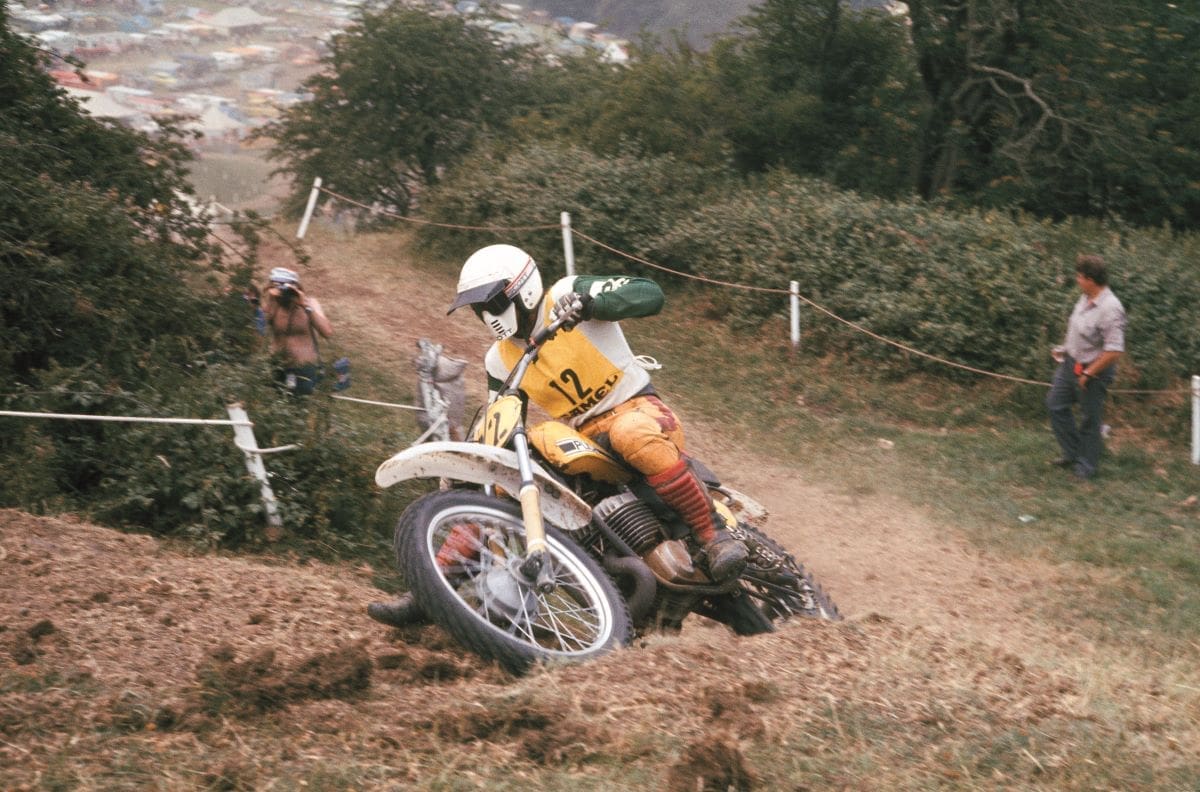
Words: Tim Britton Media Ltd
Pics: Nick Nicholls Collection at Mortons Archive
Were you there!? Did you see it? Such questions are asked after the fact when some extraordinary sporting achievement goes down in history. It doesn’t matter what sport is being talked about when these questions are gasped out by incredulous enthusiasts, who may or may not have witnessed the achievement themselves, it only matters such achievements bring the crowds to their feet and are recorded in the press of the day. Just such an achievement happened on July 4, 1976 at Dodington Park in Gloucestershire when 18-year-old Graham Noyce left the MX world in no doubt he was on his way.
So, were you among the 15,000 jubilant fans who apparently leapt to their feet as Hampshire’s Graham Noyce hustled his Maico ahead of legend Roger De Coster on the third lap of the first race of the British round of the 500cc world contest. In doing so the teenager became the first Brit to win a GP race for six years since, we think, Dave Nicoll in Luxemburg and the first Brit to win a race at the home GP for nine years since Dave Bickers won the second leg of the British GP in 1967. So it is understandable the press were ecstatic.
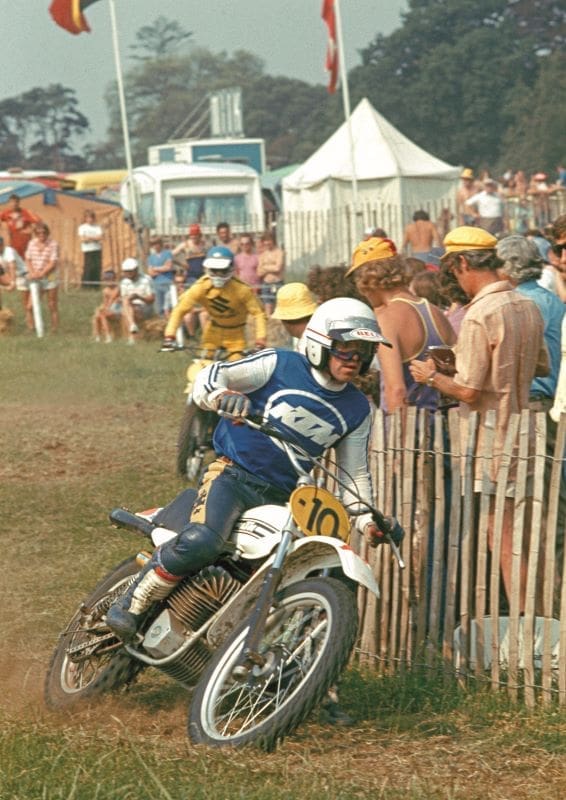
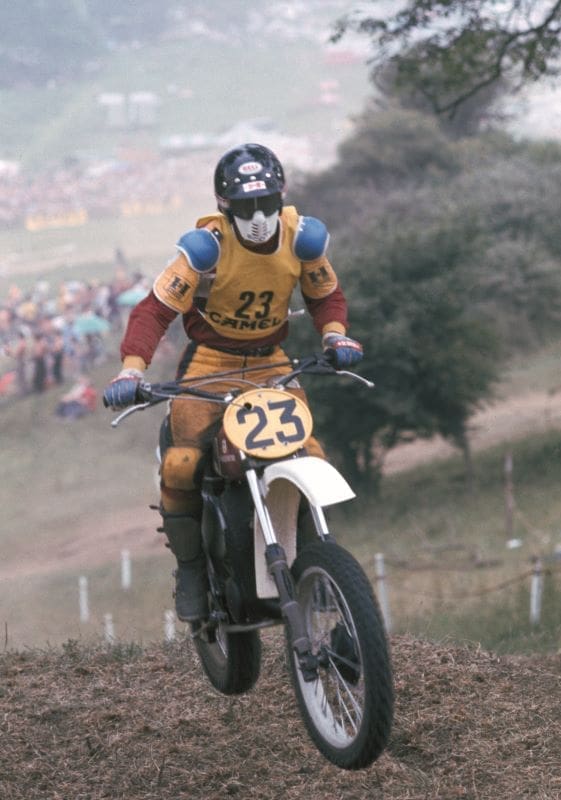
De Coster was the reigning world champion and, despite a sticking throttle which hampered his race towards the end, there was little doubt Noyce was the master of the race being at times 35 seconds ahead of the Belgian. Lap after lap, Noyce was keeping it together with a maturity of racing not often seen in a rider so young. When he crossed the finish line on the last lap Noyce was a long way ahead of the best riders in the world with Gerrit Wolsink second and De Coster third. Then UK Maico importer Bryan Goss, himself no slouch on an MXer, had tears of joy running down his cheeks at his protégé’s achievement and there was much anticipation for the second race and much talk of ‘could this be a home win of the home GP’?
Now those of a similar age to the CDB editor will be able to recall 1976 when the UK was in the grip of the hottest summer for years and as preparations for the second leg of the GP were taking place the crowd basked in the heat. Could Noyce do it again? Well, the second leg of this GP started in the same vein as the first one finished, with De Coster having cured the sticking throttle which afflicted his performance in the first leg and the contest was expected to be phenomenal. Then there was a downpour and the track conditions altered in an instant. The flag dropped, the entry raced away and it all went horribly wrong for Graham Noyce. Rocketing to the front of the pack on the first downhill turn, the Hampshire lad was in no position to avoid a fallen rider and crashed heavily. In many respects he was lucky to escape with a severe bruising of the spine but he had little option but spend the rest of the race in the medical facility. The mantle for British success then fell to Vic Allan, himself feeling a bit second-hand after wrenching his foot badly in the first race, and John Banks. With Noyce out of it the Allan/Banks combo took over second and third places behind Adolf Weil – a DNFer in the first leg – until Banks was sidelined by a loose seat, leaving all to Vic Allan to do. Weil was out in front and Allan’s tussle was with De Coster and, as with Noyce in the first leg, his performance had the crowd on their feet. Twice the diminutive Scot overhauled reigning world champ De Coster as they swapped second and third places between them and both kept ahead of Ake Jonsson. With the track as slippery as a slippery thing with extra slippery added it was Allan’s turn to taste the mud as, while lying third, he lost traction and ended on the ground at the start of the straight. Despite spinning round and round, almost unbelievably Allan not only kept a hold of the bike but kept it going and remounted… still in third place! The ‘off’ had done the bike a power of no good though. Bent levers are no fun at the best of times – let alone in the cut and thrust of a GP – yet Allan ignored the handicap and kept ahead of Jonsson to finish the second leg of the GP in third place. While Adolf Weil was untroubled at the head of the second race, De Coster had problems at the other end of his bike this time as his rear dampers were breaking up. However the Belgian held his bike together and his 10 points in the first leg added to 12 points in the second leg ensured he was the overall winner – though one can’t help wondering what the outcome might have been had Adolf Weil not been a DNF in the first race when his sprocket bolts sheared and Graham Noyce managed to avoid the fallen rider in the second but, as the saying goes in racing: “Winners are only counted at the finish.”
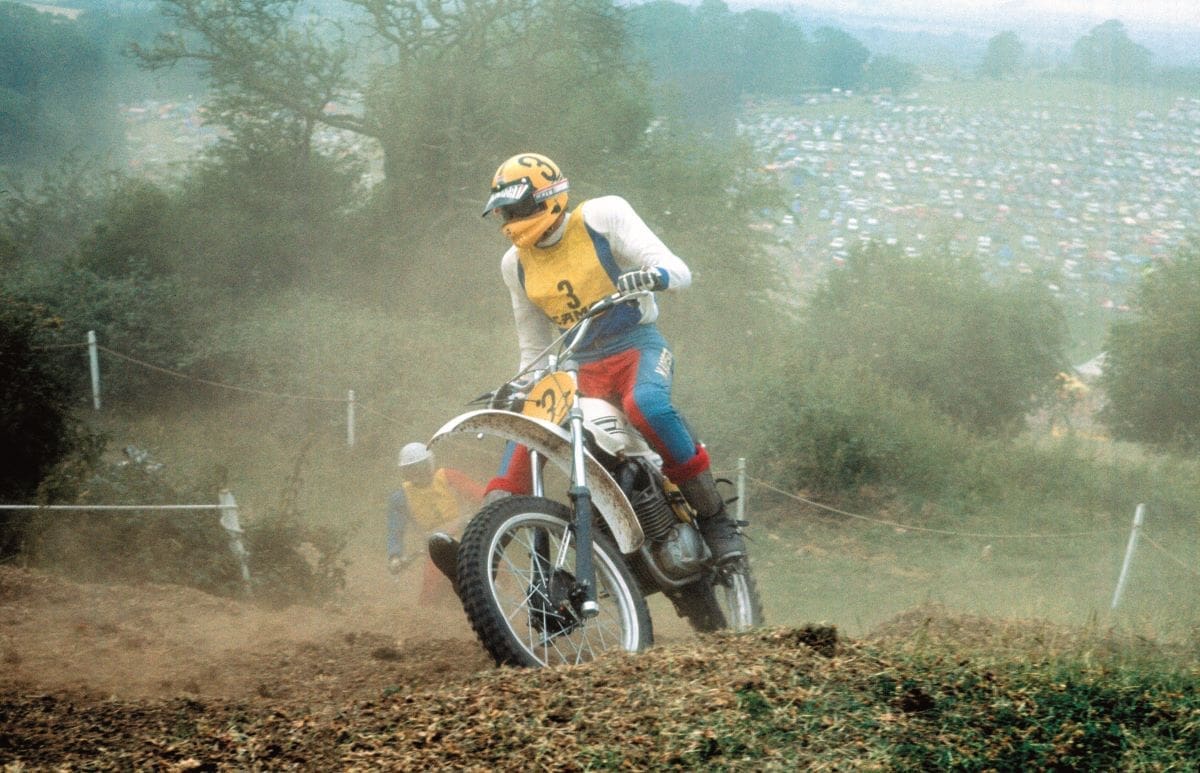
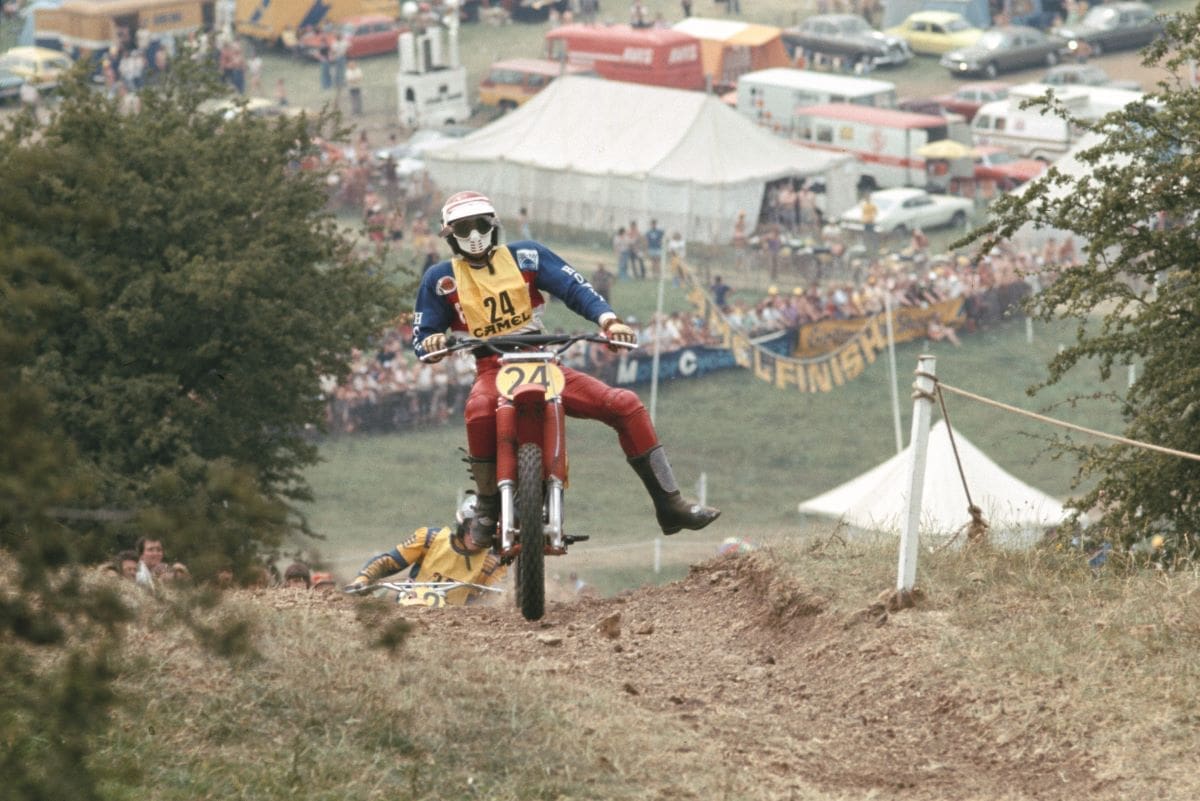
As an indication of the way racing goes, spare a thought for those who hit troubles such as Gerrit Wolsink who had been the star man in the US earlier in the series. The Dutch star was on the start line of race one and knew his clutch was not well; perhaps distracted by this he caught his front wheel in the start gate and stood his Suzuki on its nose. Dead last, Wolsink battled his way through the field to third place as the last lap began and almost in desperation he passed De Coster to hang on to second place across the line. It must have been galling for the lad to have his clutch completely fail in the second race and leave him no option but retire.
Perhaps the unluckiest rider of the day was Pierre Karsmakers who led the first race for two laps until one of his rear dampers broke in half. Then, after leading the second race for 13 laps, the Honda rider lost one of his footrests which seriously affected his racing. Dropping further and further back, Karsmakers ended the race in 13th place.
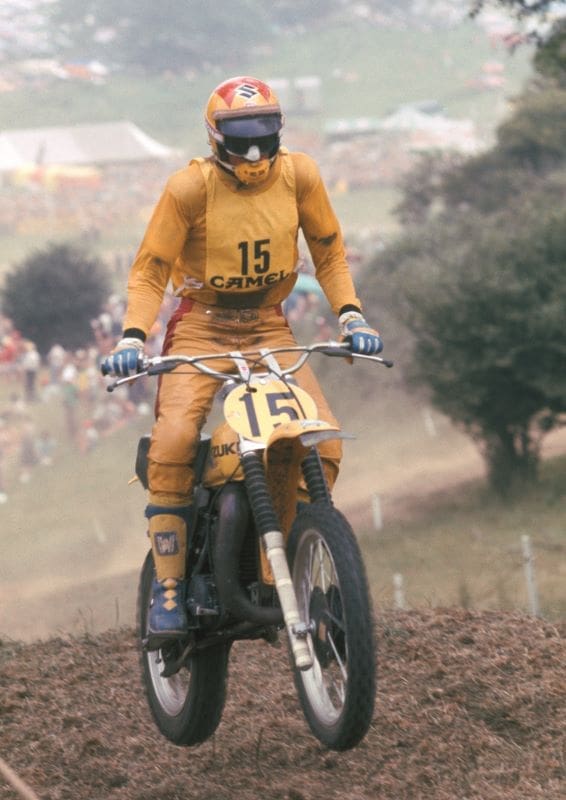
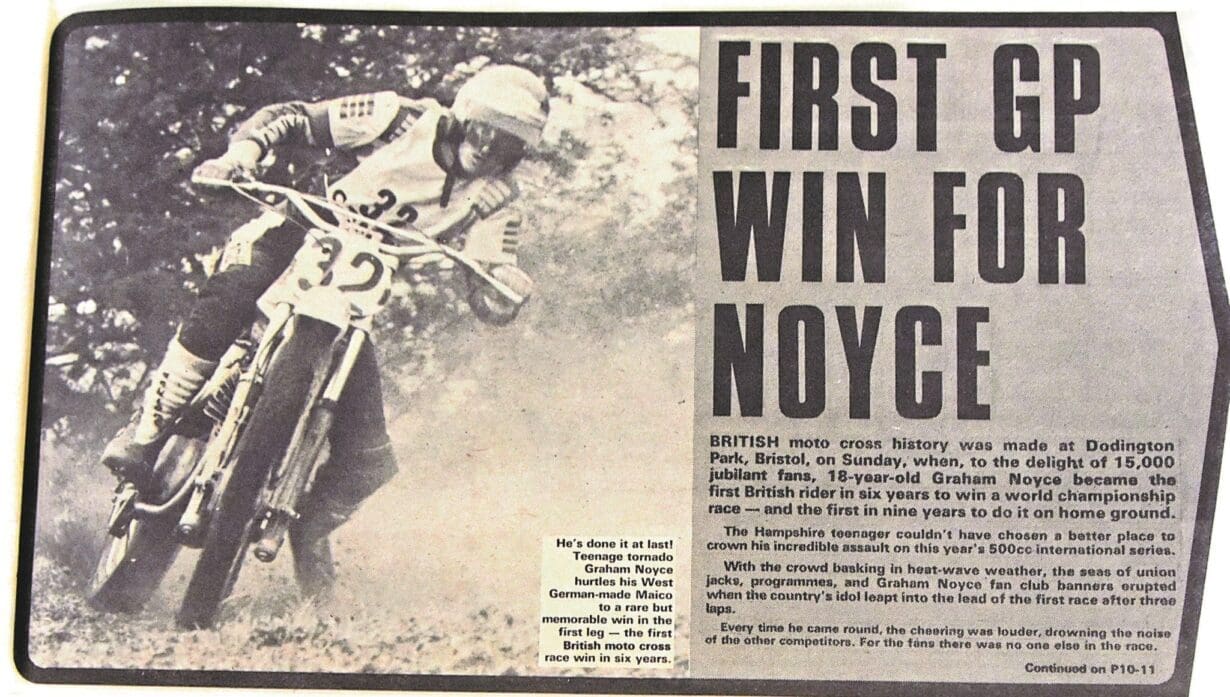
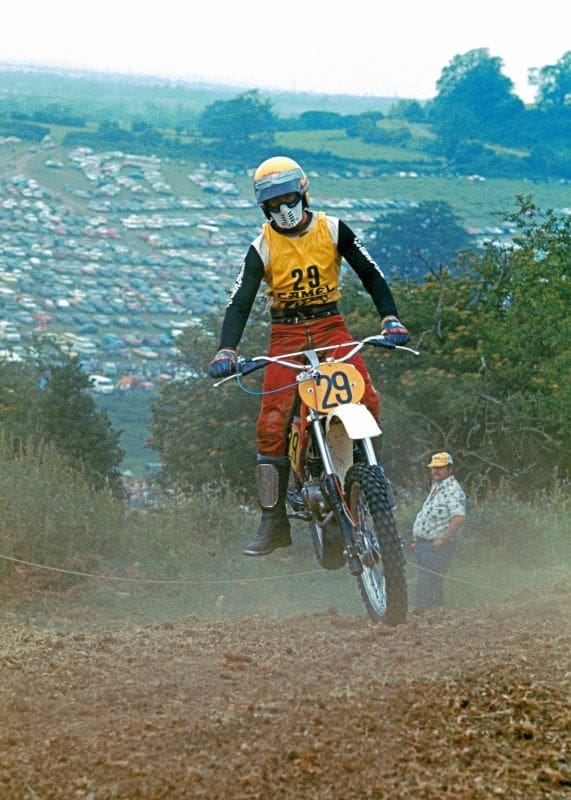
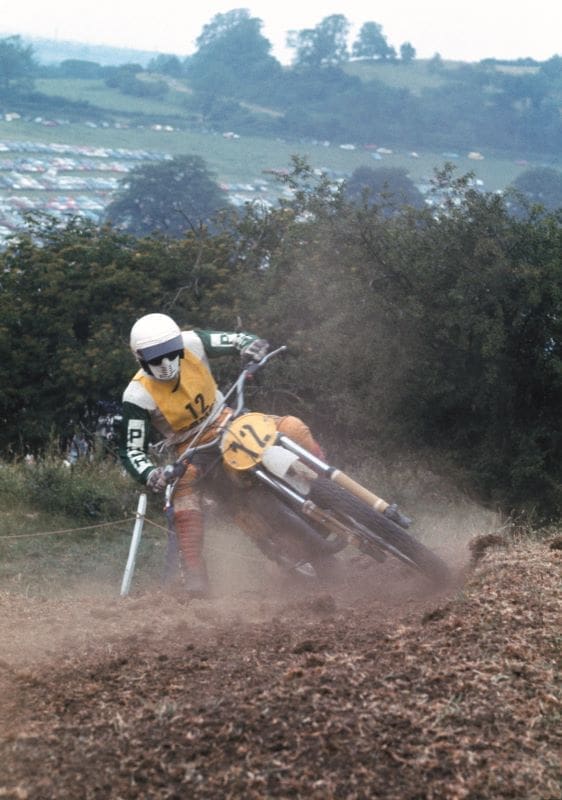
Nor was it a good day for veteran Vic Eastwood who was crocked at the start of the meeting with a knee injury turned septic and he eventually had to give in to the agony and retire. Future world 250cc champion Neil Hudson was having a mixed day too; a collapsing rear wheel put him out of the first race but he placed seventh in the second while Bob Wright was T-boned in the first race and, slightly detuned, managed 10th in the second. Still under doctor’s orders to rest the damage to his spine, Noyce missed the presentation ceremony but there was little doubt in the minds of any of the home crowd he was the hero of the day.
Though history records Roger De Coster would win the 1976 500cc world MX title this was not certain as he left the Gloucestershire circuit with two rounds to go. Looking at the title table as it stood, yes, De Coster had a slim three-point lead over Gerrit Wolsink with Adolf Weil in third place, though unlikely to trouble either rider unless he won all four legs of the remaining two GPs and the two series leaders failed to finish. Fourth place man Graham Noyce too couldn’t affect the outcome but his time would come in 1979 when the title would head to Hampshire. In winning this, his fifth 500cc title, De Coster had straddled the classic and modern eras and had come back from being written off, not just by the press, to prove he had what it took to be and remain a winner.
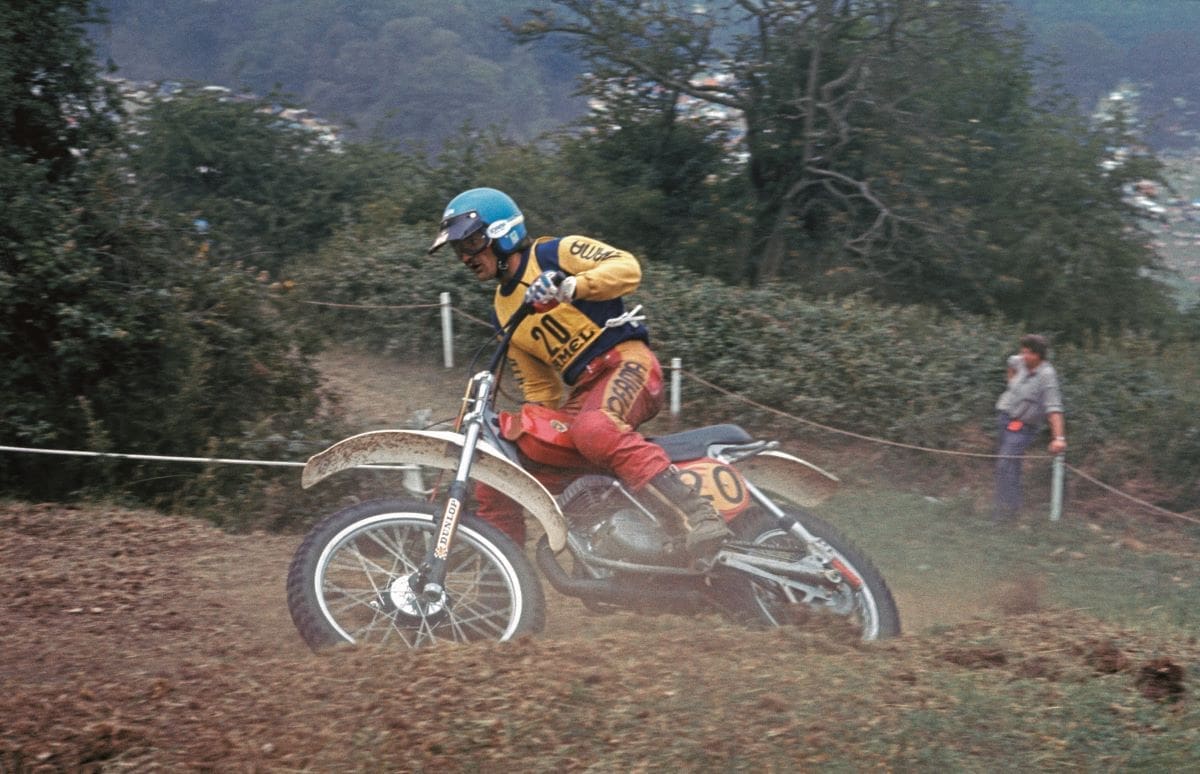
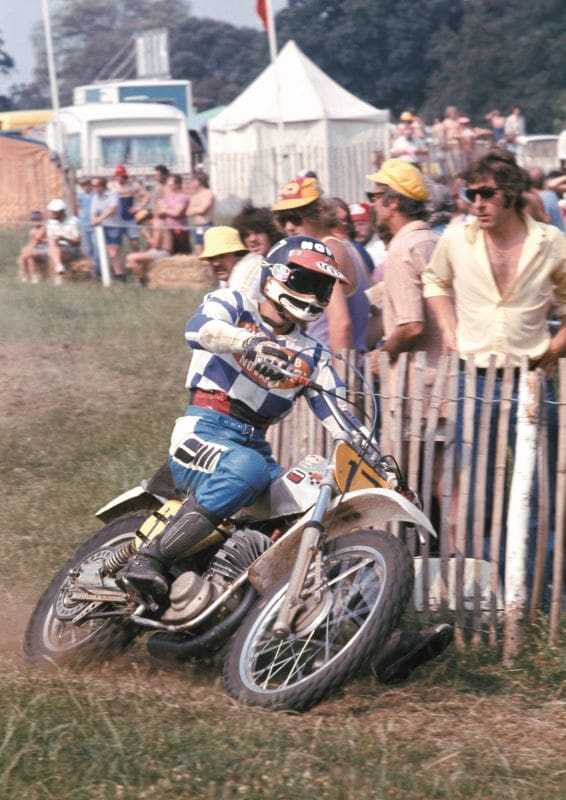
British European Champions
There were four British European Champions once the series, or the 500cc class at least, gained championship status; the last two champions before it was elevated to world status were British. As the 500cc class went up a notch the 250cc racers wanted a title to chase so they sort of forced the idea on the FIM and held a series in 1957, the winner of which was declared European Champion rather grudgingly by the authorities. As with the 500cc class the last two 250cc European titles were won by the UK:
John Draper 500cc BSA 1955
Les Archer 500cc Norton 1956
Dave Bickers 250cc Greeves 1960
Dave Bickers 250cc Greeves 1961
A bit of history
By the time Graham Noyce made his impact on the 1976 British GP the series was 20 years old, having gained ‘world’ status in 1957 when Bill Nilsson rode a converted road racer AJS 7R to the title. Maybe you’re thinking “hold on a minute… a 7R is not only a road racer but a 350cc one too…” Well Nilsson upped the capacity and added MX equipment such as higher ’bars, scrambles sized wheels and tyres, a smaller petrol tank and so on to take on the world.
Before this though the series was much more informal with there not even being an individual European championship until 1952 when, on the back of the success and popularity of the MX des Nations Team Event, a championship was launched. With six rounds in total and the best scores of four rounds to count to the championship the series was under way and six nations fielded riders – Italy, Belgium, Luxembourg, Sweden, France and Great Britain. Honour of being the first official European Champion went to Belgian Victor Leloup.
Quickly the series grew to eight rounds but remained at best of four to count to the championship until the ‘world’ status arrived. Then five best results out of eight rounds counted to the title. Though classed as a world championship by the FIM – the sport’s governing body – it was still primarily a European contest though the number of rounds would fluctuate between eight and 14 and consequentially the number of rounds which counted to the title fluctuated too. At one time it was as low as five and as high as eight rounds in which results mattered.
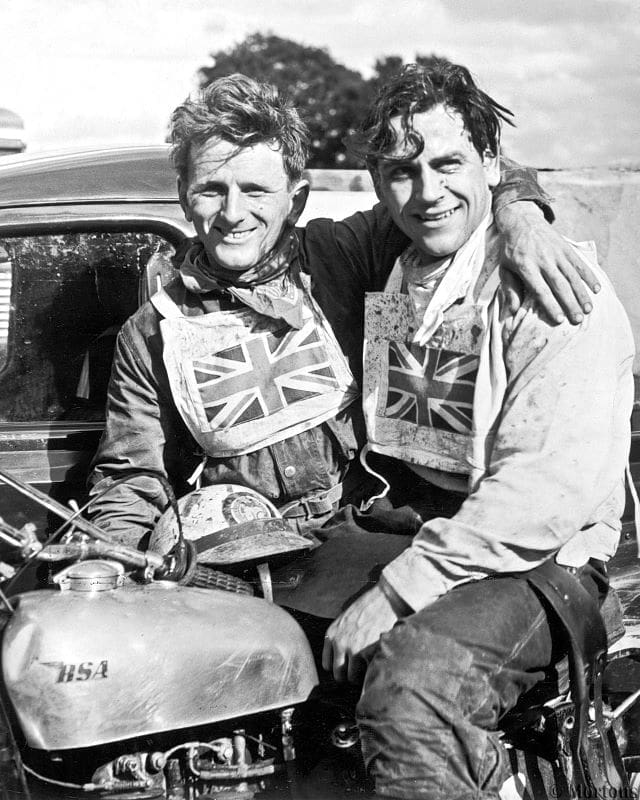
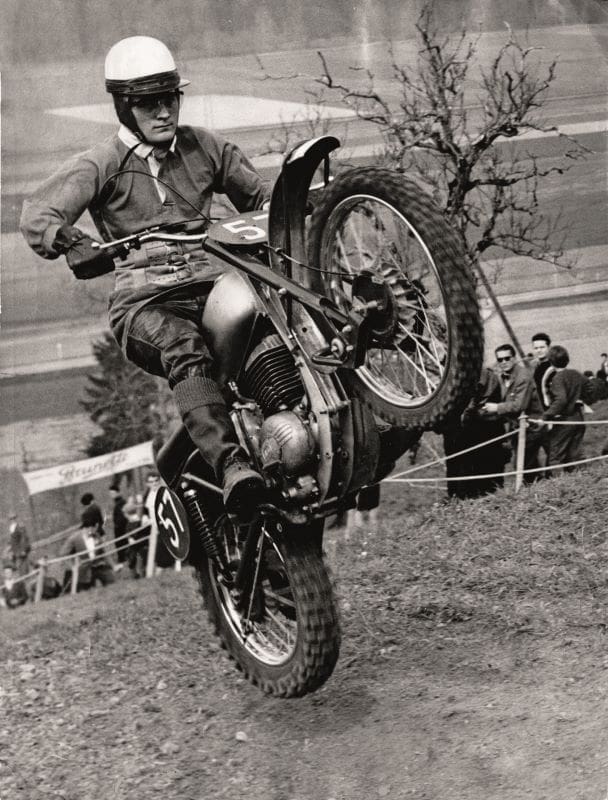
Though there had been non-European riders in both the European and world contests it was not until 1973 the title contest had rounds on another continent when the whole circus headed for Carlsbad circuit in California for the American MX GP.
A Canadian round was added in 1975, a sensible addition when you think about it as the logistics of getting teams to America for one event could be prohibitive. Another addition in 1975 was a 125cc class and Gaston Rahier became the first 125cc world champion.
The series has seen innumerable changes as it has progressed from a simple group of riders determined to race motocross and feeling adventurous by crossing the Channel – either way – and being abroad to a hard-fought battle in which national prestige, financial success and, most importantly, motorcycle sales are gained. Like any sporting contest there are the legends who seemed to have it easy, the hard-luck stories where titles are missed by seconds or a point or two. Along the way there have been instances of skulduggery by organisers determined their team would win and partisan ‘fans’ determined to prevent anyone but ‘their’ rider from winning – but the contest remains and these days has even gained a classic championship too.

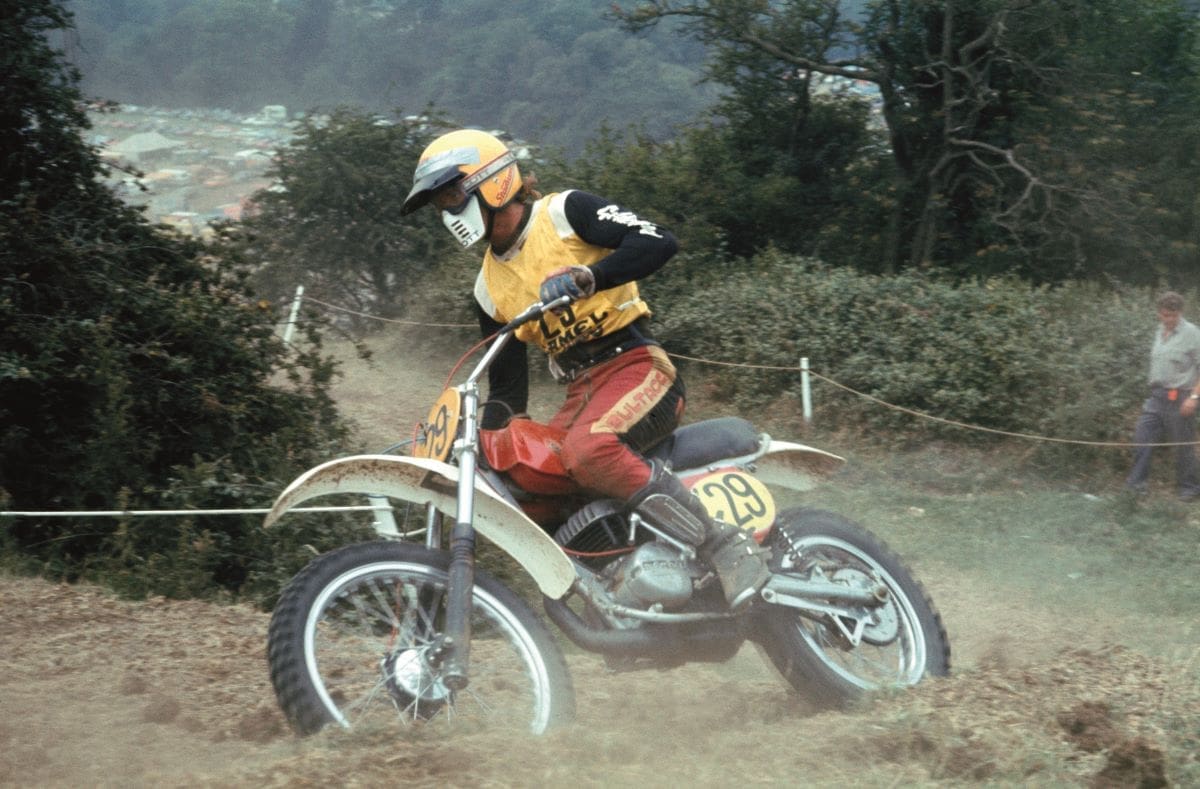
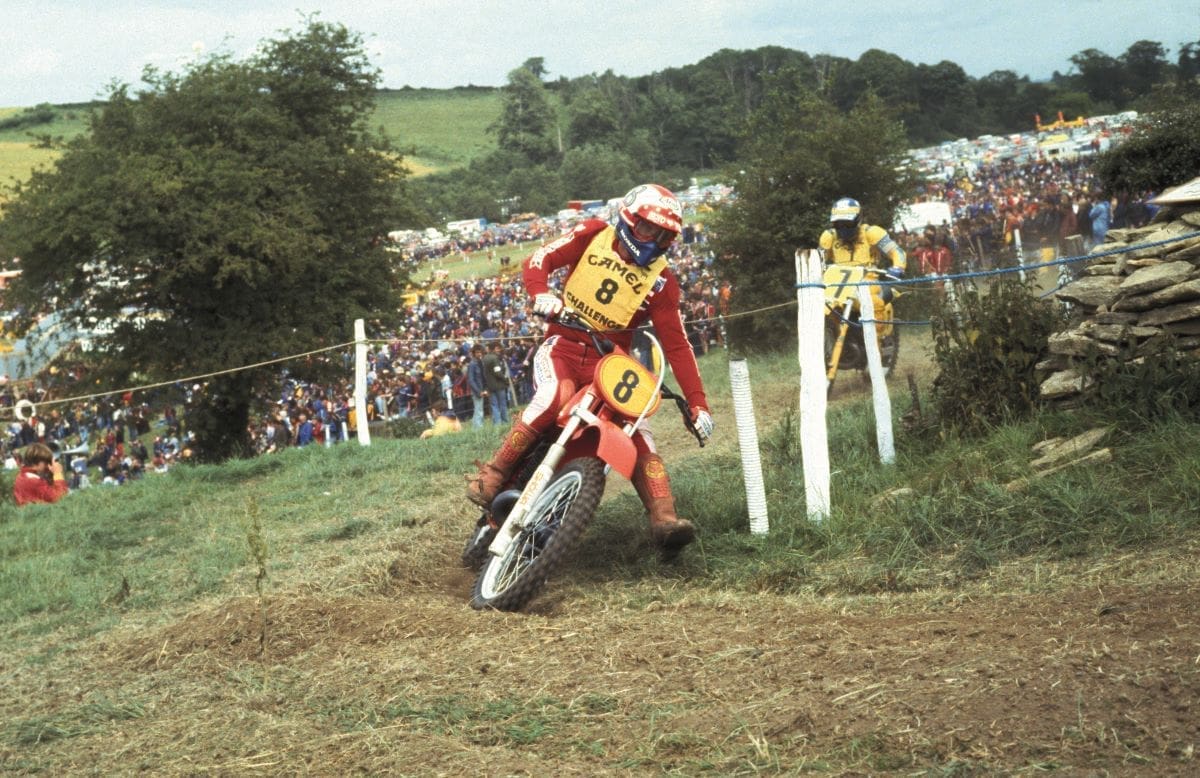
British World MX Champions
Since the international 500cc scrambles contest gained world championship status in 1957 the title has come to Great Britain six times. The first time was in the decline of the British motorcycle industry in the Sixties when a once giant manufacturer decided to win the title. Then came a 14-year gap until the Union Flag was once again waved on the final championship podium and gave the UK some reason to celebrate the Seventies, though a different country’s manufacturing giant had decided to win the title. The same company provided the machinery for another British rider to take the title three times in the mid to late Eighties. The names of both the riders and machines are well known but listed here as a reminder:
Jeff Smith BSA 1964
Jeff Smith BSA 1965
Graham Noyce Honda 1979
Dave Thorpe Honda 1985
Dave Thorpe Honda 1986
Dave Thorpe Honda 1989
In the smaller class, times were much leaner with only Neil Hudson carving his name on the 250cc trophy for the UK 19 years after the contest gained world championship status.



